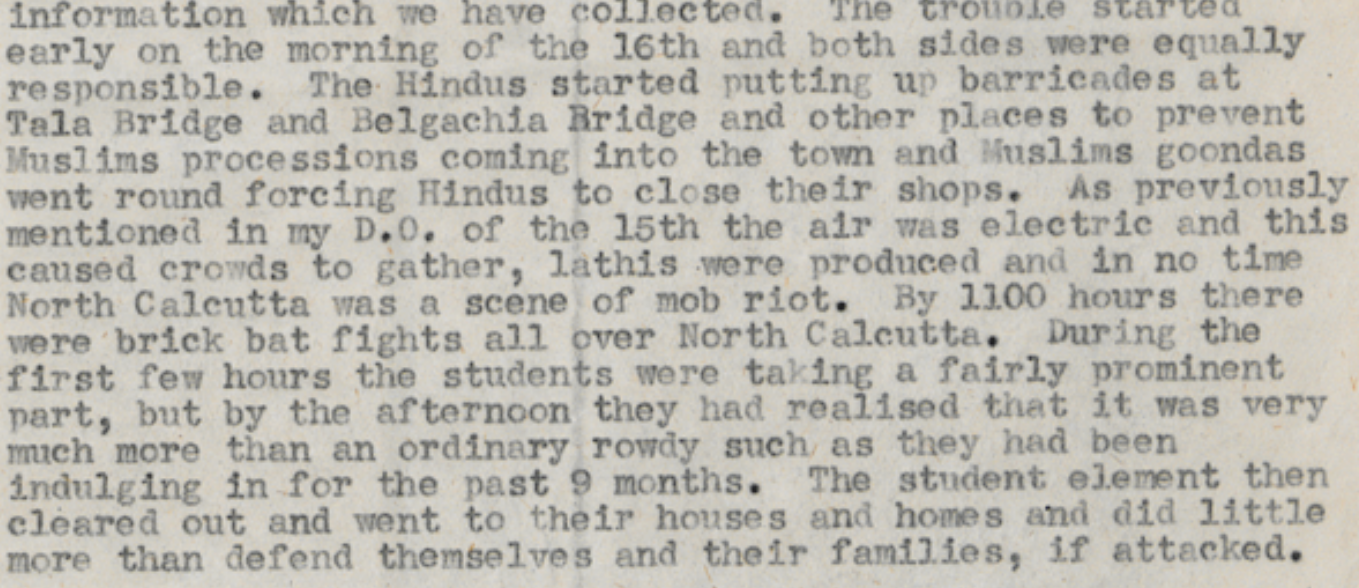Pre-Partition Violence
Even before the partition and its announcement, there was significant violence and tension between Hindus and Muslim

Extracts from a military report on the Calcutta riots
{The National Archives, August 1946}
On Direct Action Day (August 16, 1946), riots broke out between Hindus and Muslims. British officers in the area estimated the death toll at around 2-3 thousand after a couple of weeks. Additionally, police were hesitant to shoot due to the sheer volume of people at the scene. The fact that this occurred on Direct Action Day shows the great degree to which opinions were polarized about whether there should be an independent Muslim state. Accordingly, Muslims pleaded more for an independent state after this event. Furthermore, the fact that the British only counted three thousand deaths while the tally after the war was over 100,000 shows how chaotic, intense, and unorderly the violence was.

Summary of the Calcutta Riots
{The Great Calcutta Killing, August 1946, 2018}
Just 3 months before the Indian Independence, the often-forgotten Rawalpindi Massacres occurred after Hindu and Sikh students protested the push to form a Muslim Ministry in Punjab. Muslim gangs then attacked Hindus and Sikhs in Rawalpindi, resulting in nearly 80,000 deaths over the next weeks. Despite the fact that this conflict had such a high death toll, it is still not commonly remembered, which illustrates the frequency with which such high-casualty conflicts occurred during this time period. Furthermore, this event shows the magnitude of the tensions as a generally peaceful protest of Hindus and Sikhs led to their complete brutalization afterwards by Muslim gangs.

Description of the Rawalpindi Massacres
{The forgotten massacre, 2014}